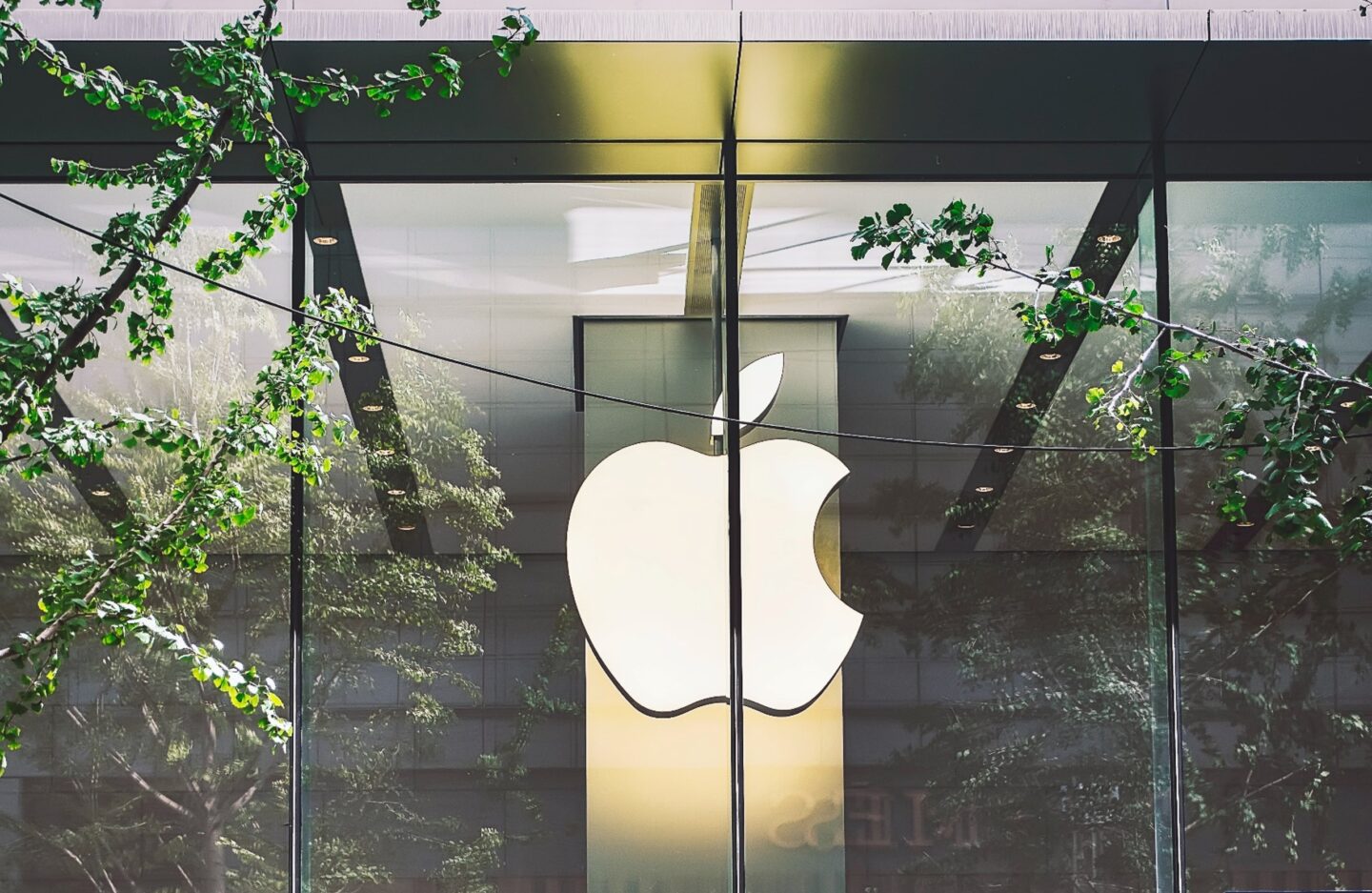
Digital sustainability: it pays to be a leader, not a laggard
Companies that excel in both digital and sustainable transformation attract a stock market premium, according to research. So, how do you tap into that value? ...

by Julia Binder, Michael R. Wade Published 26 February 2024 in Sustainability • 7 min read
By their very nature, digital technologies can help organizations secure sustainable impact more quickly by empowering data-driven decisions and innovations that help align technological advancements with environmental responsibilities.
Digital technologies are already improving sustainability outcomes in important areas such as the ongoing electrification of the transportation sector, the implementation of smart-city concepts to enable more efficient use of space and resources, and the harnessing of spatial data and smart sensors to improve the use of land, water, and pesticides in the agricultural sector.
In a 2022 cross-industry study, 40% of executives said that they expected digital technologies to have a positive effect on their sustainability agendas. Yet many organizations still value these technologies largely for the economic benefits they offer, such as reduced costs, increased revenues, or enhanced agility. They have yet to fully explore these resources’ potential in advancing sustainability – or even to see sustainability and digital advancement as complementary.
Digital sustainability can be defined as the use of digital tools and technologies to improve environmental sustainability, either in addition to organizational performance or at the expense of it. Achieving it requires a novel approach, centered on better insights, actions, and scaling of business activities.
Gaining visibility into global supply chains can yield vast amounts of information. Making sense of it is the next step. Digital tools and technologies can provide clarity, visibility, and transparency regarding sustainability impacts.
More than 1,000 companies with a combined value of $16.4tn have signed pledges to reach net zero between 2025 and 2035. When Google’s 2030 net zero goal was threatened by the growing energy demands created by the cooling needs of its huge data centers, the company asked its AI subsidiary, DeepMind, to collect information from sensors in these centers. Using a real-time model of the cooling systems, it was able to predict the future temperature and pressure in each data center with increasing accuracy, enabling a 40% reduction in energy used for cooling.

“Getting transparency across the whole value chain is critical because transparency is not only there for sustainability – it also enables you to improve your performance.”- Supply chain executive, Philips
Global flavor and fragrance manufacturer Firmenich introduced its PATH2FARM digital traceability initiative in 2021 to measure its Scope 3 emissions (which are harder to track as they occur outside a company’s control, unlike Scope 1 and 2 emissions). By monitoring the social and environmental impacts of raw materials and offering customers access to the company’s database, the initiative provides end-to-end transparency in the supply chain.
BASF launched a similar project in 2022 called Seed2Sew, utilizing blockchain technology to trace the fashion value chain from cotton seeds to ginning, spinning, knitting, and manufacturing.
Ethical chocolate company Tony’s Chocolonely uses its cloud-based Beantracker platform to monitor the movement of cocoa beans from plantations in West Africa to factories in Europe, filling information gaps and providing a better understanding of the environmental impact of transportation and production. Tony’s also shares insights with partners and some competitors via a platform called Open Tracker.
German chemicals giant BASF has begun combining satellite and sensor data with digital analytics to gather information about agricultural conditions. The aim is to help farmers make choices that improve sustainability while minimizing the ecological footprints, thus aligning agricultural practices more closely with sustainability goals.
Another example of improved visibility is the map-based, open-source platform used by restoration and conservation site network, Restor, integrating real-time data and high-resolution satellite imagery to identify areas with potential for ecological restoration. Restor collects data from various restoration projects globally, promoting transparency and collaboration.
Data analysis regarding sustainability benefits enables better corporate decisions, leading to greater sustainability. Digital tools and technologies can reduce the need for physical resources, mitigate the negative impact of these resources, and help businesses improve environmental services.
Replacing physical assets with digital equivalents often results in cost reduction and decreased impact on the environment. Electric vehicle manufacturer Tesla creates a digital simulation of every car it sells using data collected from sensors on the vehicles and uploaded to the cloud. This digital twin enables the company to predict where faults and breakdowns are most likely to occur, resulting in lower maintenance costs and recalls.
Oil-field services company Baker Hughes combines simulated data from each digital twin with actual performance data from the physical object, forming a digital triplet, extending product life, and reducing the need for physical prototypes. It can also help achieve safety and sustainability targets through remote monitoring and AI-enabled predictive analytics.
Other examples of dematerialization, such as additive manufacturing and 3-D printing, can help reduce waste in the manufacturing process and reduce the costs and logistical challenges of getting products to customers.
Digital tools and technologies can reduce the need for physical resources, mitigate the negative impact of these resources, and help businesses improve environmental services.
Digital technologies can boost sustainability by minimizing the environmental impact of physical objects. The City of Geneva introduced a smart parking system in 2017 to alleviate traffic congestion and emissions caused by drivers seeking parking spaces. The solution incorporates a network of sensors embedded beneath parking spaces, together with high-resolution cameras, precise GPS mapping, and a consumer app.
Remote maintenance systems were already expanding across much of the industrialized world before COVID-19, and the pandemic accelerated their adoption. Liquid-packaging giant Tetra Pak uses virtual reality (VR) headsets to enable teams of technicians to conduct complicated maintenance tasks on its food –and beverage packaging lines in hard-to-reach locations, such as Yemen. A general technician wears the headset, which links to a specialist who guides the technician through the fix.
Lengthening the useful life of physical resources can also minimize harmful impacts. Medical technology company Philips has designed circular imaging products, the components of which can be repurposed and reused. The company also converts elements of its products from hardware to software that can be updated, rather than replaced. A supply chain executive at the company says: “Getting transparency across the whole value chain is critical because transparency is not only there for sustainability – it also enables you to improve your performance.”
Innovative digital sustainability approaches often face challenges when it comes to the challenge of scaling solutions. Multistakeholder and cross-sector collaboration can be invaluable in driving scalability.
The Schneider Electric Exchange is a dynamic open platform for sharing IoT-driven energy management and automation solutions. By promoting community-driven challenges asking for solutions across a wide spectrum of topics, it provides resources for collaboration among stakeholders, including customers, partners, developers, experts, innovators, industry professionals, and sustainability advocates.
Digital sustainability can be defined as the use of digital tools and technologies to improve environmental sustainability, either in addition to organizational performance or at the expense of it.
Another example is the Holy Grail 2.0 initiative brings together more than 160 organizations across the fast-moving consumer goods (FMCG) value chain to improve the management, sorting, and recycling of plastic packaging. Digital watermarks, read by high-resolution cameras installed at sorting units, are placed on the consumer packaging of its members.
Cross-industry cooperation also underpins a standardized digital battery passport developed by Catena-X in collaboration with the automotive sector. By streamlining complex processes, optimizing resource usage, and promoting transparency, this tool aims to ensure compliance and transparency while curbing carbon footprints and emissions limits.
Digital technologies can support sustainability strategies by offering insights, improving actions, and expanding key benefits across organizations and industries. Real improvements depend on pursuing all three of these approaches. If companies use digital technologies to improve insights and reduce harmful impacts, yet do not expand these initiatives, they risk not attaining the scale needed to achieve real benefits. Meanwhile, organizations that focus on action and scale yet lack the visibility and transparency to fully understand the root causes of sustainability issues risk missing the most critical issues and areas of potential improvement.
But whatever path organizations choose to take, the most important thing they can do is to start the journey to digital sustainability.
The reporting lines of digital and sustainability teams often do not intersect except at the very top of an organizational chart. These structural challenges can be addressed using three different models for managing digital sustainability, each with advantages and disadvantages.
Digital and sustainability teams are separate entities but coordinate to collaborate with external parties on projects. Coordination across functions is limited to infrequent exchanges. Organizations benefit from the experience of external vendors and conflict between teams is reduced. However, it adds complexity to projects and may make them difficult to scale.
The focus is on bringing digitization and sustainability together. While the two functions do not formally merge, they work hand in hand, with leadership rotated for each project. People are sourced from various departments for the duration of the project. This model can run into difficulties when trying to align diverse groups’ competing interests, priorities, and incentives.
Digital sustainability is embedded within the organizational culture by empowering and incentivizing employees. Supported by leaders within the executive team, it fosters a culture of continuous improvement and cross-functional collaboration. The model prioritizes long-term value creation, although it can complicate decision-making for employees.

Professor of Sustainable innovation and Business Transformation at IMD
Julia Binder, Professor of Sustainable Innovation and Business Transformation, is a renowned thought leader recognized on the 2022 Thinkers50 Radar list for her work at the intersection of sustainability and innovation. As Director of IMD’s Center for Sustainable and Inclusive Business, Binder is dedicated to leveraging IMD’s diverse expertise on sustainability topics to guide business leaders in discovering innovative solutions to contemporary challenges. At IMD, Binder serves as Program Director for Creating Value in the Circular Economy and teaches in key open programs including the Advanced Management Program (AMP), Transition to Business Leadership (TBL), TransformTech (TT), and Leading Sustainable Business Transformation (LSBT). She is involved in the school’s EMBA and MBA programs, and contributes to IMD’s custom programs, crafting transformative learning journeys for clients globally.

TONOMUS Professor of Strategy and Digital
Michael R Wade is TONOMUS Professor of Strategy and Digital at IMD and Director of the TONOMUS Global Center for Digital and AI Transformation. He directs a number of open programs such as Leading Digital Business Transformation, Digital Transformation for Boards, Leading Digital Execution, and the Digital Transformation Sprint. He has written 10 books, hundreds of articles, and hosted popular management podcasts including Mike & Amit Talk Tech. In 2021, he was inducted into the Swiss Digital Shapers Hall of Fame.

17 July 2024 • by Michael R. Wade, Evangelos Syrigos in Sustainability
Companies that excel in both digital and sustainable transformation attract a stock market premium, according to research. So, how do you tap into that value? ...

11 July 2024 • by Stéphane J. G. Girod in Sustainability
A series of watershed events forced CHANEL out of its comfort zone, culminating in the launch of CHANEL Mission 1.5°. With this new strategy, the luxury fashion house embarked on a journey...

5 July 2024 • by Avni Shah in Sustainability
Creative industries have a key role to play in creating positive social change. Here are six key insights to help them achieve their goals. ...

3 July 2024 • by Richard Baldwin, Salvatore Cantale in Sustainability
The EU Corporate Sustainability Reporting Directive (CSRD) will impose comprehensive and standardized sustainability reporting responsibilities on firms, adding unprecedented complexity to mergers and acquisitions. ...
Explore first person business intelligence from top minds curated for a global executive audience